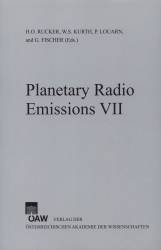
Planetary Radio Emissions VII, pp. 97-98, 2011/12/28
Proceedings of the 7th International Workshop on Planetary, Solar and Heliospheric Radio Emissions held at Graz, Austria, September 15–17, 2010

On 17 October 2008, the Cassini spacecraft crossed the southern sources of Saturn kilometric radiation (SKR), while flying along high-latitude nightside magnetic field lines. In situ measurements allowed us to characterize for the first time the source region of an extra-terrestrial auroral radio emission. Using radio, magnetic field and particle observations, we characterize the plasma environment surrounding the SKR sources. Magnetic field lines supporting local as well as distant radio sources (detected on both extraordinary and ordinary modes) map a continuous, high-latitude and spiral-shaped unusual auroral oval observed on the dawnside, consistent with enhanced auroral activity. While investigating the Cyclotron Maser Instability (CMI) as a mechanism responsible for SKR generation, we find that observed cutoff frequencies are consistent with radio waves amplified perpendicular to the magnetic field by hot (6 to 9 keV) resonant electrons, measured locally. Finally, we confirm and quantify previous observations of the SKR elliptical polarization, found to evolve toward circular polarization with the distance to the source.